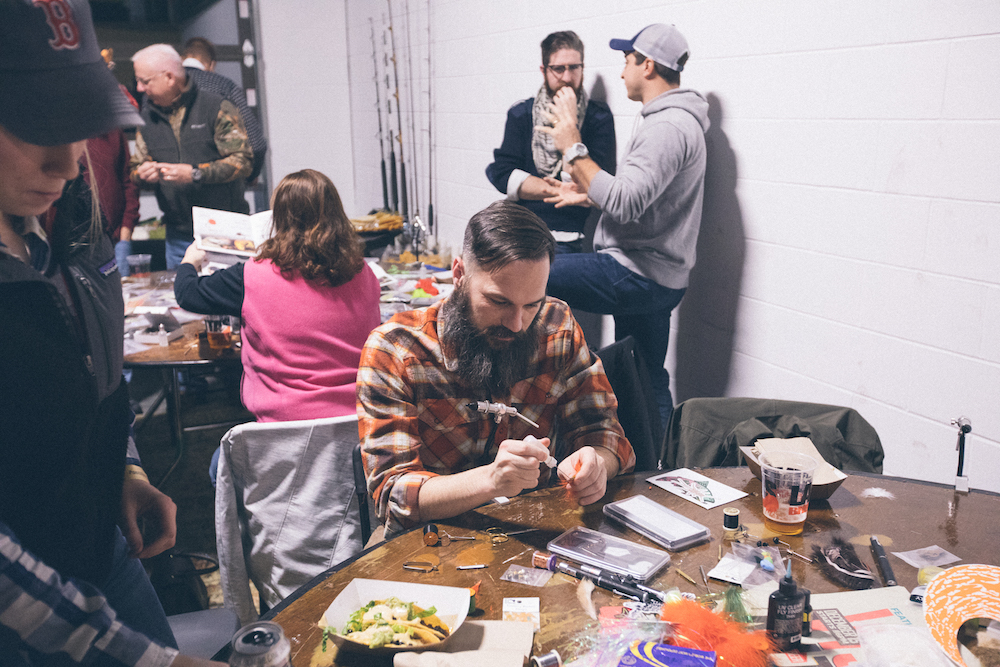Welcome back to the second installment in Postfly’s Fly Tying 101 series. In this post we will be breaking down fly tying feather types and when to use each! We hope this will help new tyers familiarize themselves with new materials and to serve as a resource for even the most experienced tyer!
Feather Types

Hackle – Cape
Cape feathers are from the shoulders and neck of either a hen or rooster. They are commonly used for wet flies to form the collar of a nymph or as the body hackle of a wooly bugger. These feathers are shorter and wider making them perfect for a nice body taper or forming a veil over a wet fly.
Pro tip: If the cape is taken from a rooster, the feathers are perfect for dry flies, as they absorb far less water than feathers take from a hen! Use hen cape feathers when tying wet flies or nymphs!

Hackle – Saddle
Saddle hackle feathers are taken from the rear area and tail of the bird. Think long tail feathers on a rooster or the tail of a hen. These feathers are great for dry fly collars and as body wraps for larger wooly buggers. But we much prefer them as the tail of a large streamer because of how well they hold their shape in the water!

Biots & Quills
Taken from the wing feathers of Ducks, Geese and Turkey, these feathers are multi-purpose! Use the shorter biots as tails or wings on nymphs or use the longer quills as body wraps for nymphs or Quill dry flies!

Marabou
Marabou, as we know and love it, is not the feather it once was. Once taken from a specific species of European stork it is now most commonly taken from turkeys! This versatile feather is the workhorse of streamer fly tying, use it as the tail of a wooly bugger, palmer it to create a streamer body or really use it however you please. Because of how it is made up, marabou is always in motion, creating that appetizing profile fish cannot resist.
Other Feathers

Peacock Herl – These are long almost stringy feathers with iridescent fibers that essentially work as the flash in a fly, however, they are far more versatile than their synthetic compatriots, use a peacock herl as a collar for a nymph or tie it in a streamer to add a touch of flash to its profile!

Ostrich – Similar to peacock herl, these feathers’ fibers are long and flexible, making them excellent for tying streamers!

CDC (Cul de Canard) – These are the superhydrophobic (they don’t absorb water) feathers that waterfowl use to stay afloat and dry on the water. These feathers are commonly used as the wings of dry flies, although they can be used in emerger patterns as well to hold that telltale air bubble.

CDL (Coq de Leon) – These feathers are from a specific breed of chicken known for its long fibrous feathers. Each feather is made up of many super fine fibers, making them perfect for nymph and dry fly tails!
Now that you’re getting the basics covered, its time to join to the Postfly Tying Subscription and get a new fly tying kit delivered every month, or tune into our weekly live fly tying broadcast, Tie with Postfly, and learn along with us!
Happy tying!
https://postflybox.com/blog/2018/10/18/invest-in-what-you-love-equity-crowdfunding-and-why-were-doing-it/
https://postflybox.com/blog/2018/09/13/fly-tying-101-what-you-need-to-start-tying-your-own/
https://postflybox.com/blog/2018/10/11/tie-with-postfly-ep-2-the-double-bunny/
https://postflybox.com/blog/2018/10/11/how-to-tie-the-y2k-fly/

Dan Zazworsky’s passion is sharing his love of fly fishing with anyone that will listen, read or watch. You can find him exploring new waters every day while chasing any fish that will eat a fly!




2 thoughts on “Fly Tying 101: The Feathers”